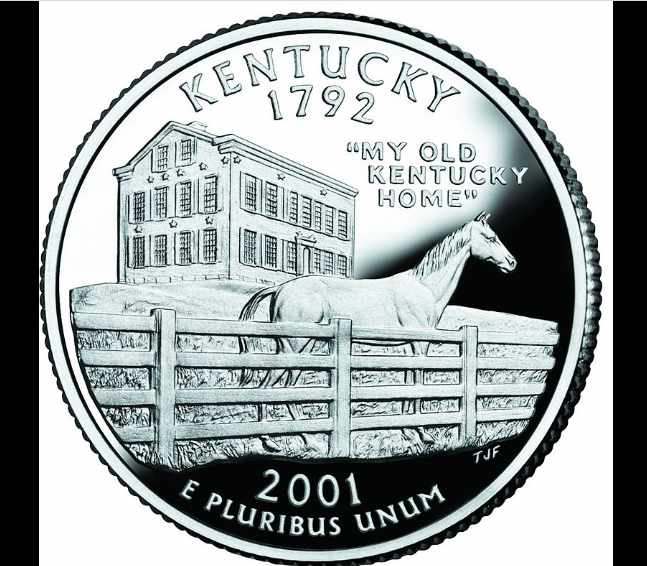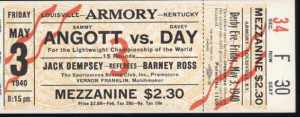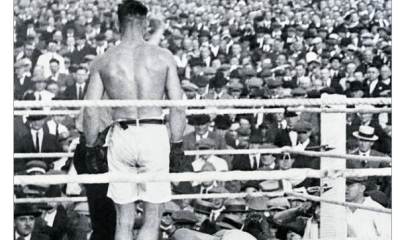Featured Articles
It’s Kentucky Derby Week (sort of), so Let’s Talk Boxing

It’s Kentucky Derby Week (sort of), so Let’s Talk Boxing
This is the week that many of us would have shifted our gaze from boxing to thoroughbred racing. The Kentucky Derby, an event pinned to the first Saturday in May, is America’s biggest single-day sporting spectacle aside from the Super Bowl.
How many people nowadays are as conversant with the Sport of Kings as with the Sweet Science? Whatever the number, it has to be miniscule. But there was a time when men of a certain age who followed boxing religiously were also, by and large, attuned to the doings on the turf.
All sports were once identified with gambling, but none more so than horseracing and boxing. In the late 19th century, as prizefighting was coming out of the shadows, the leading destinations for big fights were Coney Island, New Orleans, and the Bay Area of San Francisco. It was no coincidence that horse racing also flourished in these locales. Coney Island, which was then an adult playground – having not yet morphed into a family amusement park — then housed three racetracks which sat in close proximity. Jockeys were well-represented among boxers in the smallest weight class.
Back in those days, boxing writers often doubled-up as turf writers during the racing season. The boxing scribe invariably knew where to find the best odds in the bookmakers’ ring; the baseball guy not so much.
The great John Lardner, who created vivid portraits of Stanley Ketchel, Doc Kearns, and other boxing characters, could hold his own talking angles and systems with the sharpest of horse handicappers. The same could be said of Hall of Fame boxing writer Dan Parker who authored an outstanding primer for novice horseplayers titled “The ABC of Horseracing.”
Bill Corum, a nationally syndicated columnist, had his feet planted in both worlds while writing for the New York Journal-American. Corum did hundreds of fights on radio as Don Dunphy’s sidekick before scooting off to Bluegrass Country where he became the president of Churchill Downs.
The boxing/turf writer, someone who follows these two sports above all others, appears to have passed into oblivion with the death of Bill Nack in 2018. The title of Nack’s 2004 memoir, “My Turf: Horses, Boxers, Blood Money, and the Sporting Life,” captures his fancies but it should be noted that Nack wasn’t a conventional turf writer. He was drawn to the romance and pageantry of the racing game, feeling no obligation to share any tidbits that might prove useful to a fellow trundling off to the track with hopes of returning home with a few more bucks in his pocket.
During the bare-knuckle days in England, fights were commonly hitched to horseracing festivals. The custom, although somewhat diluted, carried over to the United States. With the advent of electric lights, many big fights were staged on the eve of a big race or the eve of the opening day of a racing meet.
Between 1921 and 1947, 13 future Hall of Famers boxed in Louisville on Derby Eve. In order of appearance, they were Joe Lynch, Memphis Pal Moore, Sammy Mandell, Bud Taylor, Young Stribling, Tommy Loughran, Mickey Walker, Jackie Fields, Freddie Miller, Barney Ross, Wesley Ramey, Sammy Angott, and Joey Maxim. All of their fights were held at the Jefferson County Armory, Louisville’s largest indoor meeting place.
Lynch, Loughran, Walker, Miller, Ross, and Angott were title-holders, but only Miller and Angott fought title fights in Louisville. In those days, champions typically fought non-title fights – sometimes lots of non-title fights – between title defenses and Kentucky actually had a law against title fights that wasn’t rescinded until 1934.
The well-known fighters that fought in Louisville on Derby Eve were typically on the downward slope of their careers, not necessarily washed-up, but well-seasoned. The American Legion, which had the final say-so on approving matches, wanted a recognizable name to ensure good newspaper coverage.
The exception was Sammy Angott who won the vacant NBA lightweight title (recognized in 41 states) in Louisville on Derby Eve, 1940, with a 15-round unanimous decision over Chicago’s Davey Day.

Angott hadn’t yet reached his peak. He was still three years away from what many would consider his signature win, a 10-round unanimous decision over Willie Pep at Madison Square Garden. Pep was 62-0 going in.
There were, however, extenuating circumstances. Angott was born in Pennsylvania and made his pro debut in Brooklyn, but in the late 1930s he made his home in Louisville and was one of the city’s most popular athletes before the onset of his title reign.
The thread between boxing and the Kentucky Derby frayed and eventually broke apart. The reasons aren’t completely clear, but the local organizers took to sponsoring competing attractions on the eve of the big race, giving visitors many more diversions from which to choose.
Many racetrack terms diffused into boxing. In the olden days when proceeds from winning bets were an important component of a boxer’s earnings, boxers were often accused of fighting under wraps, meaning fighting in a way that concealed their true form so as to build up the odds in a rematch. The unscrupulous Abe Attell, by his own gloating admission, mastered this artifice. “Under wraps” was originally a racetrack term. It denoted the practice by which a trainer covered a horse’s unique leg markings with bandages so as to confuse the clockers that timed the workouts. I don’t know who invented the term “tomato can,” but before this cruel aspersion entered the language an inferior boxer was often classed as a selling-plater, the reference to a horse only good enough to run in a cheap claiming race where every horse is for sale.
Nowadays, both horse racing and boxing are derided as an old man’s sport. This is certainly true of horseracing. A handful of historic races, most notably the Kentucky Derby, attract large crowds, but on an ordinary racing day, the races play to a sea of empty seats and the few regulars in attendance are invariably pensioners. The sport would have died out years ago if the U.S. government hadn’t carved out an exemption for horseracing when updating legislation prohibiting sports betting across state lines and if the technology hadn’t advanced to where a man could wager into a pari-mutuel pool from the comfort of his home or office.
As for boxing, it has struggled to attract new fans in the United States in the white non-Hispanic demographic, but calling it an old man’s sport betrays a parochial sensibility. Moreover, it should be noted that the popularity of boxing has always been cyclical.
—
The Kentucky Derby, a rite of May from the very inception, has been held every year on the first Saturday of the month since 1932.
With one exception.
In January of 1945, all of America’s racetracks went dark by order of the Department of War Mobilization, a lockout that ended with the signing of the Armistice on May 8. That year, the Derby was run on June 9, five weeks past the due date.
The United States, indeed virtually the entire world, now finds itself in a different kind of war. The 2020 edition of the “Run for the Roses,” the 145th renewal, won’t transpire until Sept. 5 (knock on wood) where it will rub up against the first big weekend of college football (knock on wood).
I’m not a horseplayer, but I wouldn’t let a Kentucky Derby pass without having a flutter (a British expression). Over the years I have made a few nice scores, a corroboration of the daffodil that even a blind squirrel will sometimes find an acorn.
I’ll miss the Kentucky Derby this Saturday. I have no tie to Kentucky, but hearing “My Old Kentucky Home” always brings a tear to my eye. And the sense of anticipation as the final horses enter the starting gate just can’t be beat.
Stay safe. Be well.
Check out more boxing news on video at The Boxing Channel
To comment on this story in The Fight Forum CLICK HERE
-

 Book Review4 weeks ago
Book Review4 weeks agoMark Kriegel’s New Book About Mike Tyson is a Must-Read
-

 Featured Articles2 weeks ago
Featured Articles2 weeks agoThe Hauser Report: Debunking Two Myths and Other Notes
-

 Featured Articles3 weeks ago
Featured Articles3 weeks agoMoses Itauma Continues his Rapid Rise; Steamrolls Dillian Whyte in Riyadh
-

 Featured Articles2 weeks ago
Featured Articles2 weeks agoNikita Tszyu and Australia’s Short-Lived Boxing Renaissance
-

 Featured Articles4 weeks ago
Featured Articles4 weeks agoKotari and Urakawa – Two Fatalities on the Same Card in Japan: Boxing’s Darkest Day
-

 Featured Articles3 weeks ago
Featured Articles3 weeks agoIs Moses Itauma the Next Mike Tyson?
-

 Featured Articles4 weeks ago
Featured Articles4 weeks agoRamirez and Cuello Score KOs in Libya; Fonseca Upsets Oumiha
-

 Featured Articles2 weeks ago
Featured Articles2 weeks agoBoxing Odds and Ends: Paul vs ‘Tank,’ Big Trouble for Marselles Brown and More




















